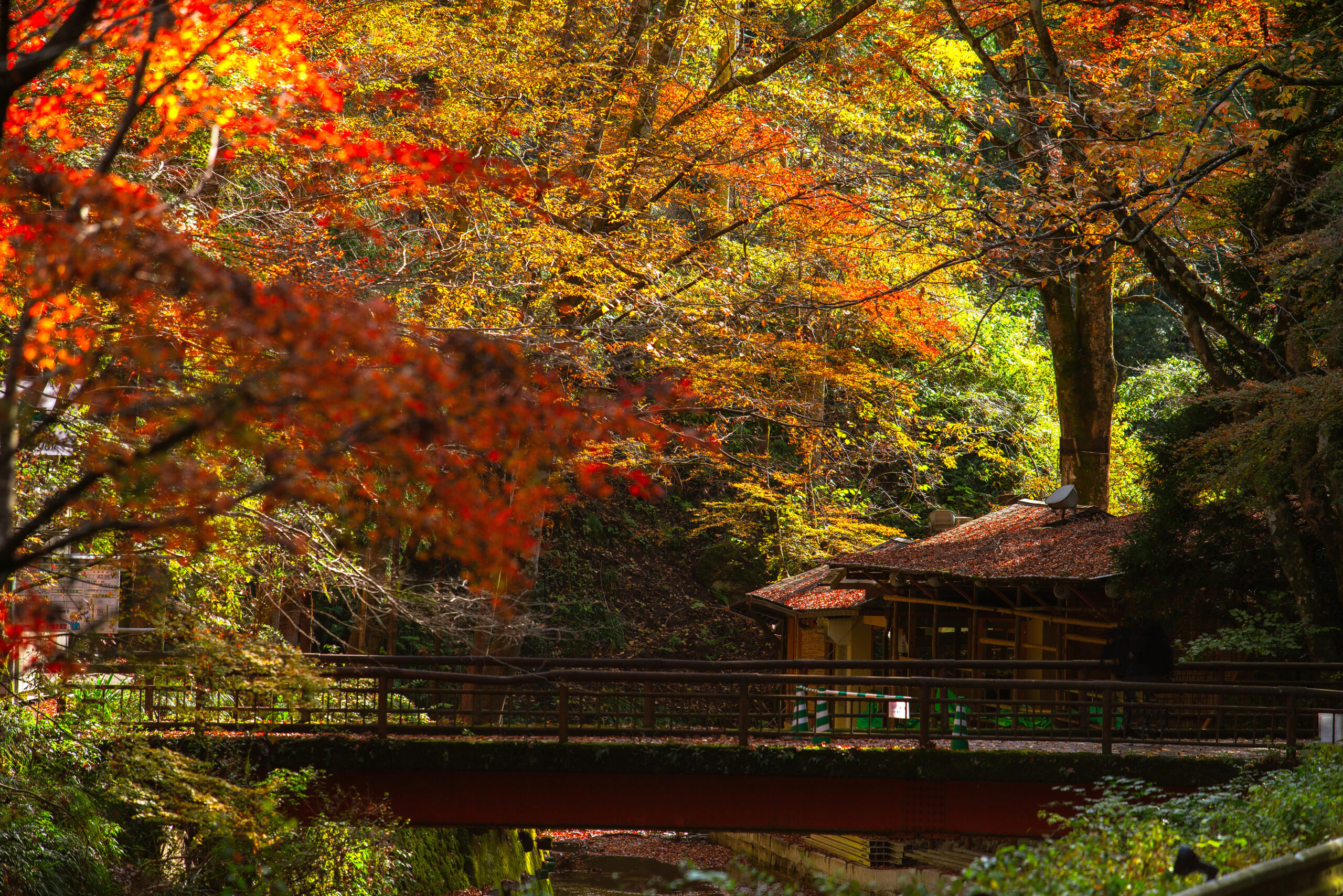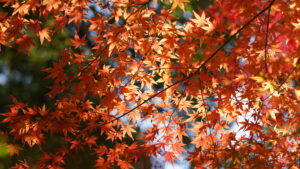As the sun tilts away, casting longer shadows and a cooler breeze, the world transforms under a vivid tapestry of crimson, gold, and amber. Autumn unfolds like a meticulously painted scroll, revealing its splendor in waves of colors and festivities that celebrate the season’s bountiful beauty. From the delicate dance of falling momiji (Japanese maple leaves) to the robust traditions of harvest festivals, autumn is a period of reflection, gratitude, and connection with nature’s cyclical rhythms. This article embarks on a journey through the heart of autumn, exploring how different cultures unveil and celebrate the glory of this enchanting season.
Autumn’s Palette: A Canvas of Crimson and Gold
As the days shorten and the air chills, nature embarks on its most dramatic transformation, painting landscapes in vibrant hues of crimson, gold, and amber. This natural spectacle is a silent signal for the beginning of autumn, a season that artists and poets have long tried to capture in their works. The changing foliage, from the bright yellows of birch trees to the deep reds of maples, creates a visual feast that beckons people outdoors. This kaleidoscope of colors provides a backdrop for autumnal celebrations, inspiring communities to gather and revel in the beauty of nature’s transitions. Photographers, too, find endless inspiration in autumn’s palette, often chasing the perfect light to capture the radiant landscapes. For many, this season is a reminder of nature’s impermanence, encouraging a momentary pause to reflect on the beauty and cycles of life.
Momiji Magic: Japan’s Love Affair with Fall Foliage
In Japan, the viewing of autumn leaves, known as "koyo" or "momijigari," is a cultural event that draws crowds into the cooler, mountainous regions where the colors are most vivid. The Japanese maple, or momiji, is particularly celebrated for its brilliant red leaves, symbolizing the season’s heart. This tradition, deeply ingrained in Japanese culture, reflects the people’s profound connection to nature and the changing seasons. Temples and parks are adorned with lanterns to illuminate the night, inviting evening viewers to a spectacular scene of natural beauty intertwined with cultural elegance. Tea ceremonies and picnics under the canopy of these radiant trees provide a moment of tranquility and appreciation for the fleeting nature of life. The momiji has also inspired countless works of art and poetry, capturing the essence of autumn’s melancholy yet striking beauty.
Harvest Festivals: A Time of Gratitude and Gathering
Across the globe, autumn is a time of harvest, and many cultures celebrate the season with festivals that express gratitude for the year’s bounty. These festivals are a testament to the human dependence on and respect for the earth’s cycles of renewal and decay. In the United States, Thanksgiving brings families together to give thanks for the harvest and other blessings of the past year. Similarly, in Europe, harvest festivals often include feasting, singing, and dancing, marking the end of the growing season and the beginning of winter preparations. In Asia, the Mid-Autumn Festival, or Mooncake Festival, is celebrated with the exchange of mooncakes and lantern processions, symbolizing reunion and abundance. These gatherings, rich in tradition and heritage, strengthen community bonds and remind us of our shared reliance on the natural world.
Unveiling Autumn’s Glory: The Significance of Seasonal Change
The arrival of autumn is marked not only by the changing leaves but also by a significant shift in our environment and psyche. This season invites introspection and preparation as the bounty of summer gives way to the scarcity of winter. In many cultures, autumn is seen as a time to reflect on life’s impermanence and the importance of letting go, mirrored in the way trees shed their leaves. The cooling temperatures and shorter days signal a time to slow down and conserve energy, preparing for the colder months ahead. The significance of seasonal change is deeply rooted in human consciousness, affecting our traditions, our diets, and even our moods. Embracing these changes can lead to a deeper understanding of our place in the natural cycle and foster a greater appreciation for the moment.
Nature’s Symphony: Experiencing the Sounds of Autumn
Autumn’s arrival is heralded not just by its visual splendor but also by a unique auditory experience. The rustling of dry leaves underfoot, the whispering winds that weave through the trees, and the distant calls of migrating birds compose autumn’s symphony. These sounds, both soothing and ephemeral, deepen the sensory experience of the season, grounding us in the moment. In Japan, the sound of flowing water combined with the rustling momiji is considered one of the subtle and profound joys of autumn. Similarly, in rural areas worldwide, the sounds of harvest, from the clattering of tractors to the gentle thud of fallen fruit, mark the season’s rhythm. Engaging with these sounds encourages a form of mindfulness, a reminder to tune into the environment’s ever-changing yet constant presence.
Culinary Celebrations: Tasting Autumn’s Abundance
Autumn’s harvest offers a cornucopia of flavors that inspire seasonal culinary traditions, from hearty stews and soups to warm, spiced beverages. This is a time when food plays a central role in celebrations, reflecting the season’s abundance and the need to prepare for the months ahead. Pumpkin, squash, apples, and pears feature prominently in many dishes, embodying the essence of autumn. In Japan, seasonal foods such as sweet potatoes, persimmons, and chestnuts are enjoyed, often incorporated into dishes that are both a feast for the eyes and the palate. These culinary traditions offer a way to connect with the season, celebrate the harvest’s bounty, and gather with loved ones. They remind us of the earth’s generosity and the cycles that govern our sustenance.
Lanterns in the Night: Illuminating Autumn Festivals
As the nights grow longer, many autumn festivals incorporate the use of lanterns, casting a warm glow against the cool, crisp air. These lights, whether floating on rivers, strung between trees, or carried by hand, symbolize hope, guiding us through the darker months. In Japan, the Toro Nagashi festival sees paper lanterns floated down rivers, a beautiful and poignant way to send off ancestral spirits. Similarly, in the West, jack-o’-lanterns light up Halloween, a tradition believed to ward off evil spirits. The use of light during these festivals represents human creativity in the face of nature’s dimming, illuminating the beauty of the season and warming the spirit as the cold encroaches.
The Art of Momiji: Cultural Practices and Poetry
The admiration for momiji has transcended simple observation, influencing various cultural practices and inspiring poetry and art for centuries. In Japan, the art of arranging autumn leaves, known as "momijigari," has been practiced as a way to bring nature indoors, celebrating its beauty in a mindful, intimate manner. Poetry, particularly haiku, has been a medium through which the ephemeral nature of autumn and its defining features are contemplated and revered. The fleeting beauty of the momiji serves as a metaphor for life’s transient nature, encouraging a reflective and appreciative state of mind. This deep cultural engagement with autumn leaves reflects a broader aesthetic appreciation for the seasons, central to Japanese philosophy and art.
From Kyoto to Vermont: A Global Tour of Autumn Beauty
The celebration of autumn’s splendor is a worldwide phenomenon, with each region offering its unique perspective and traditions. From the serene temples and gardens of Kyoto, awash in the red and gold of momiji, to the rolling hills of Vermont, where sugar maples set the landscape ablaze, the beauty of autumn can be appreciated in myriad ways. These destinations attract visitors from all corners of the globe, eager to witness the transformation of the landscape and partake in local autumnal traditions. The universal appeal of these places during autumn speaks to the deep human connection to the rhythms of nature, transcending cultural and geographic boundaries.
Family Traditions and Autumn: Creating Lifelong Memories
Autumn is a season rich in family traditions, from apple picking and pumpkin carving to sharing meals and giving thanks. These activities, passed down through generations, help to forge a deep bond with the season and with each other. They offer a way to celebrate the harvest, to revel in the beauty of nature, and to mark the passage of time in a meaningful way. For many, these traditions form the core of their autumn experience, imbued with nostalgia and a sense of continuity. In the rapid pace of modern life, these moments of togetherness and reflection are more precious than ever, reminding us of the simple joys and the enduring cycle of seasons.
Autumn Equinox: The Science and Spirituality of Change
The autumn equinox, a time when day and night are of equal length, marks the official start of the season in many cultures. This astronomical event has been celebrated for millennia, symbolizing balance, reflection, and the impending change. Scientifically, it marks a shift in the Earth’s tilt away from the sun, leading to shorter days and cooler temperatures. Spiritually, it is a time to honor the harvest, to prepare for the darker half of the year, and to reflect on the balance within our lives and the natural world. This blending of science and spirituality in the celebration of the autumn equinox highlights the human desire to understand our place in the universe and to mark the passage of time through rituals and observance.
Saying Farewell to Fall: Preparing for the Winter Ahead
As autumn reaches its zenith, with its display of colors and celebrations, the inevitable transition to winter begins. This time of year is not only about reveling in autumn’s beauty but also about preparation and adaptation. The falling leaves mulch the earth, protecting it for the cold months ahead, while animals and humans alike gather resources to sustain them through winter. Saying farewell to fall is bittersweet, a reminder of the cycle of life and the impermanence of all things. But in this departure lies the promise of renewal, the anticipation of spring, and the continuity of the seasons. It encourages us to embrace change, to find beauty in transition, and to appreciate the moment, for it too shall pass.
Autumn, with its myriad festivals, traditions, and natural beauty, invites us to pause and reflect on the cycles that govern our lives and the natural world. Through the celebration of momiji, the harvest, and the changing seasons, we are reminded of the beauty of transition, the importance of gratitude, and the value of community. As we bid farewell to the vibrant hues and rich traditions of autumn, we carry forward the lessons of this season, preparing us for the winter ahead and reminding us of the ever-present promise of renewal. In unveiling autumn’s glory, we uncover a deeper appreciation for the world around us and the transient nature of life itself.






